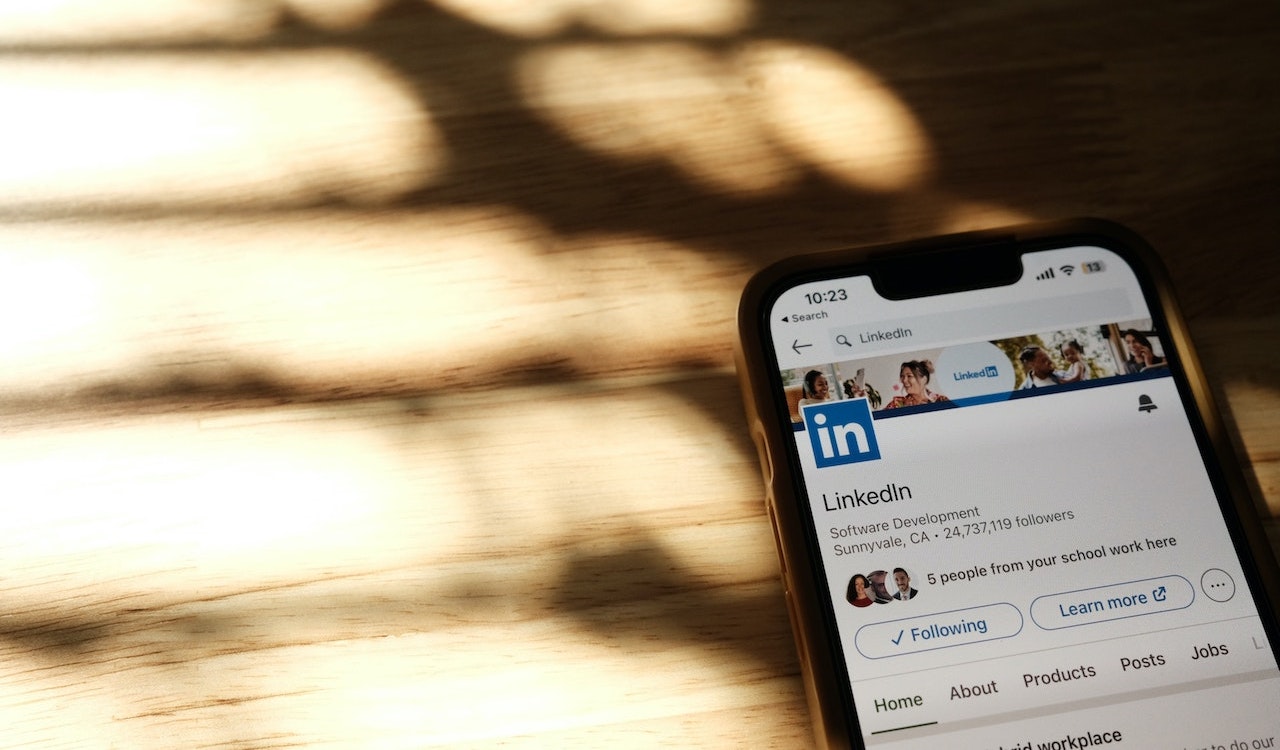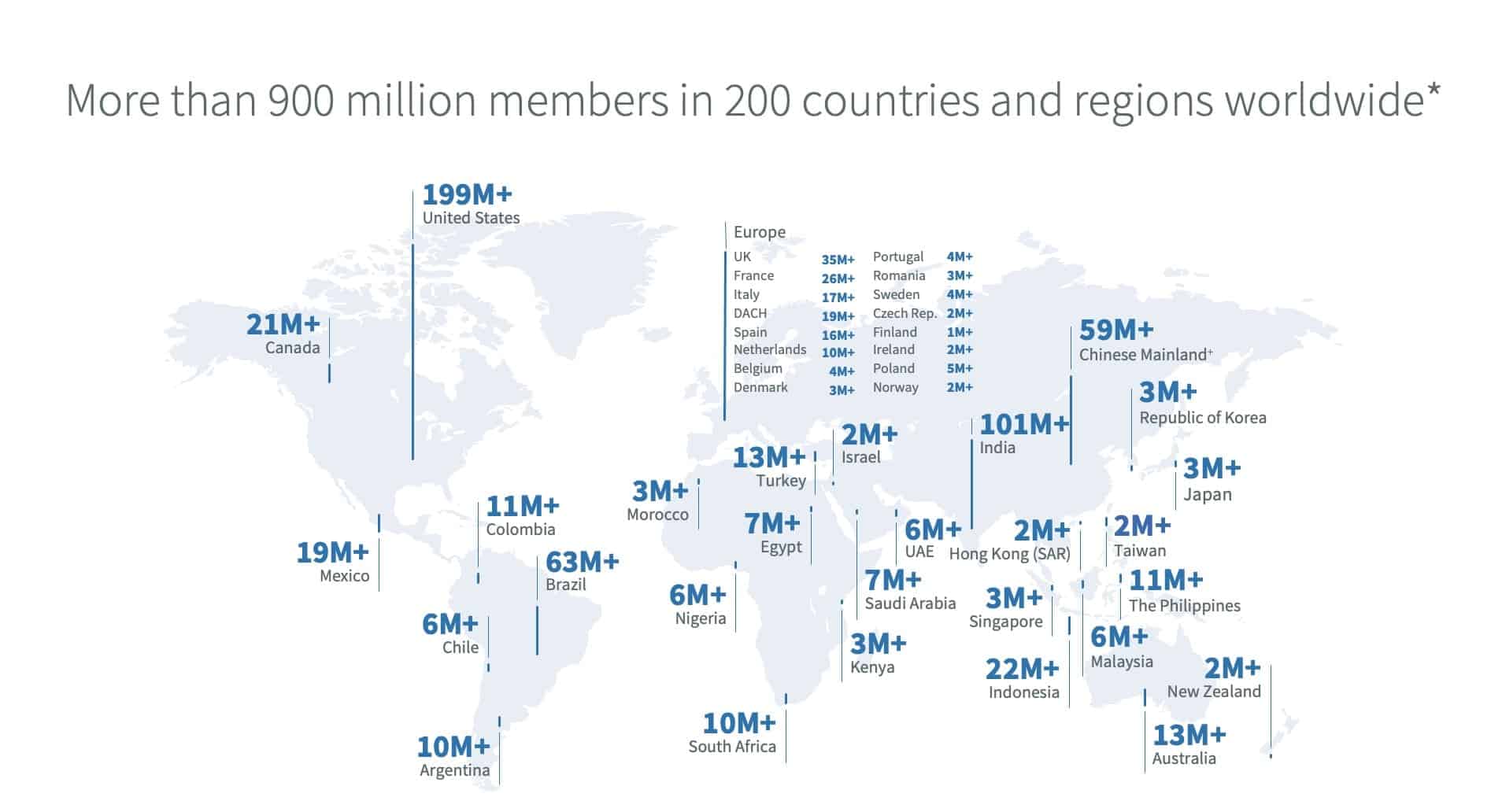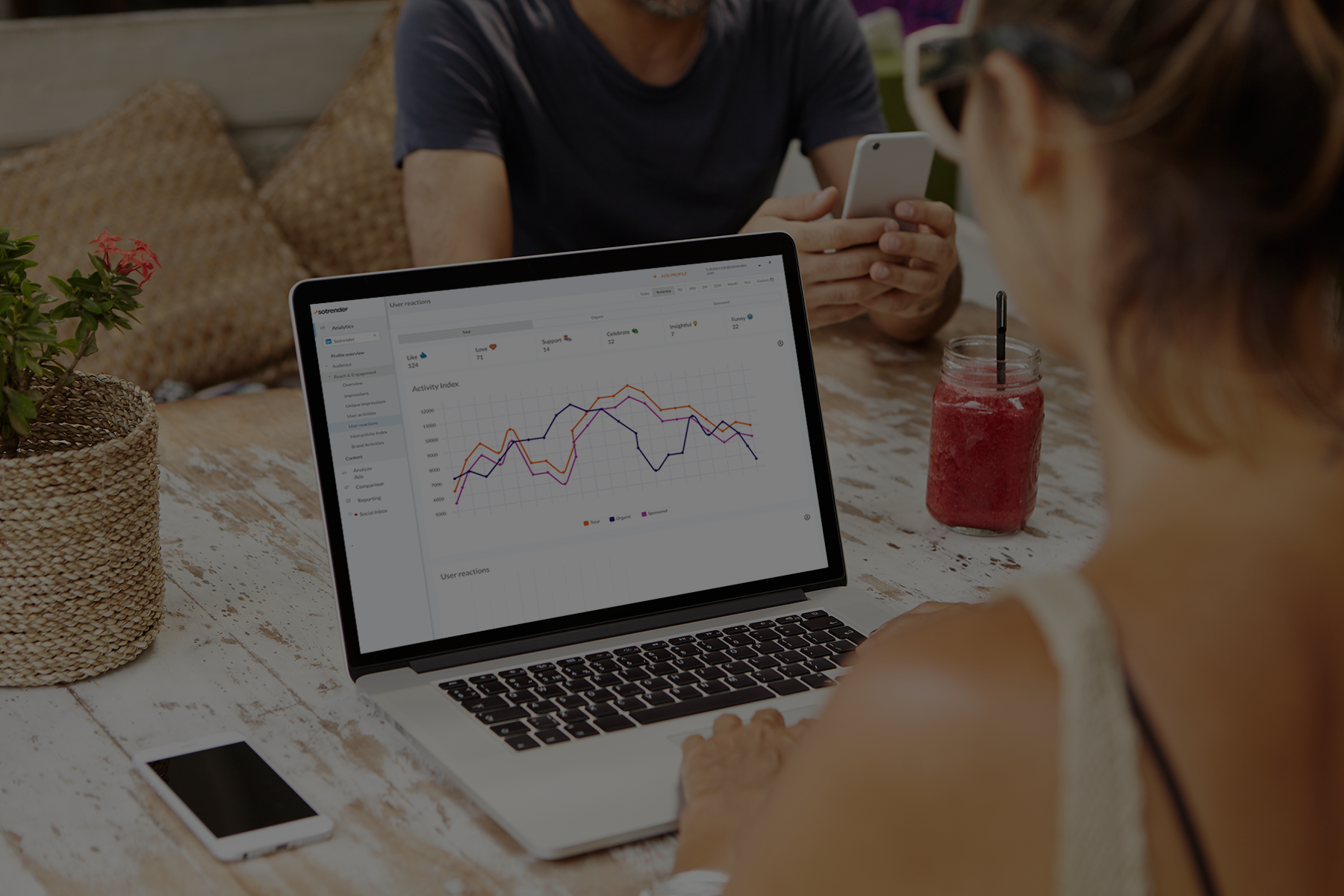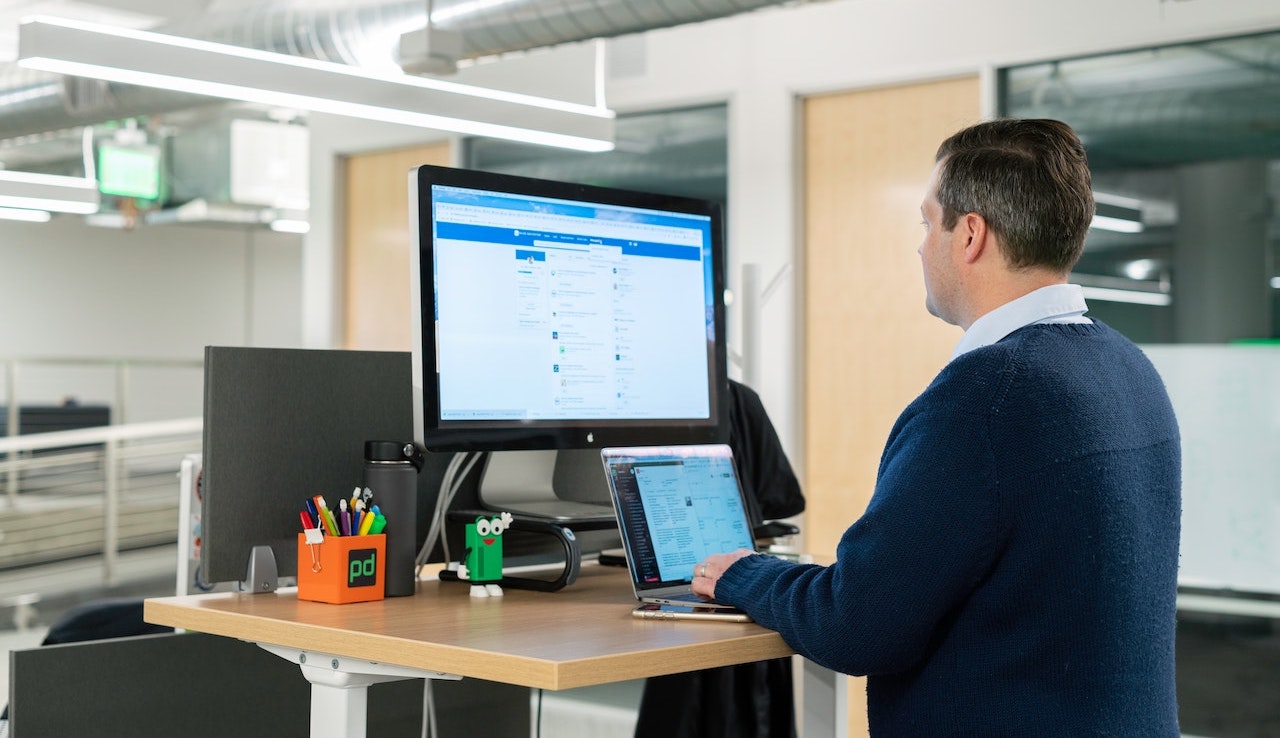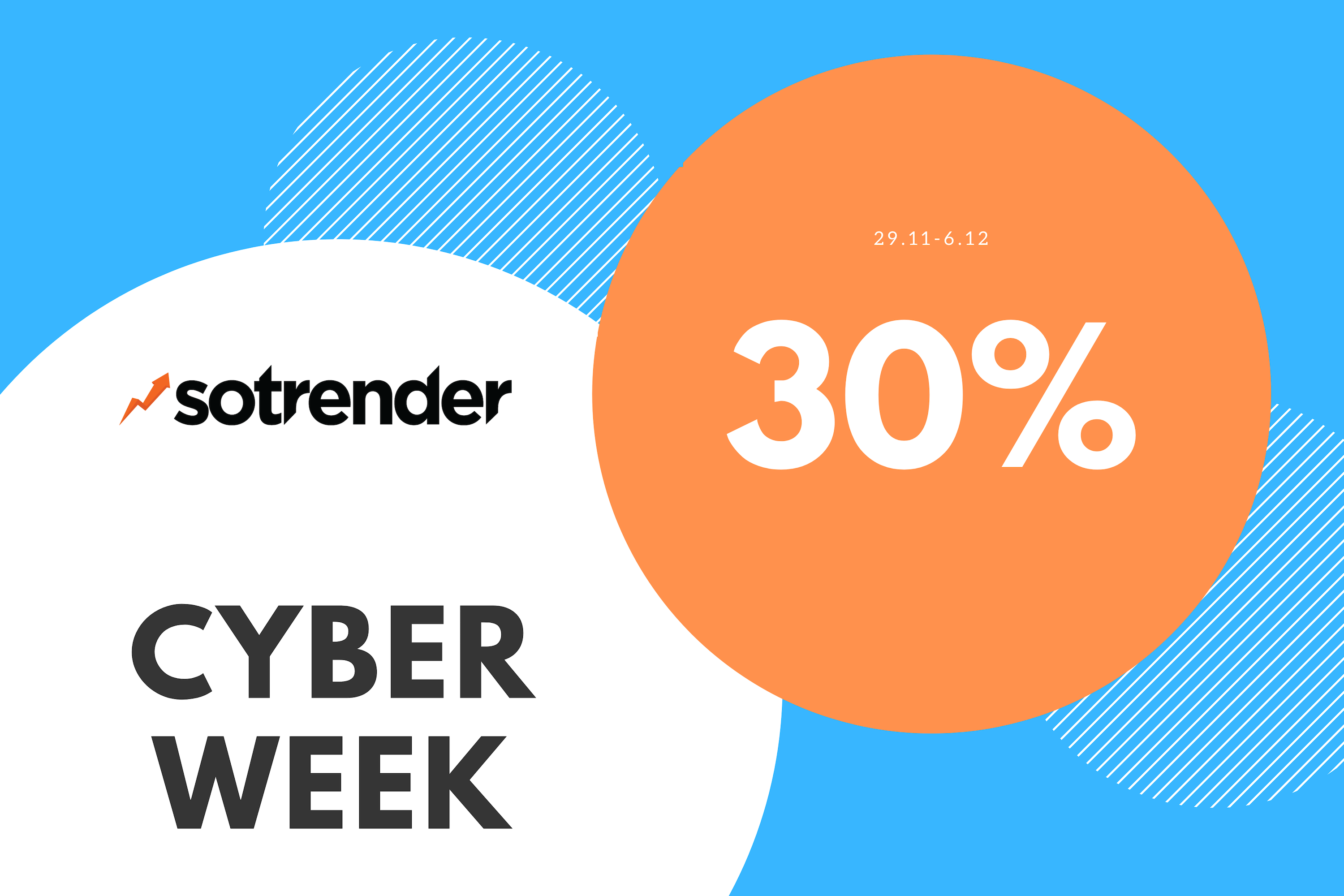LinkedIn, alongside Instagram, Facebook, and TikTok, is one of the most popular social media channels. But it also stands out significantly from other social platforms, which makes it a unique place on the internet.
At the same time, marketing on LinkedIn is increasingly popular, and that is followed by many misconceptions.
In this guide, we’ll walk you through LinkedIn essentials and best practices for brand owners. We’ll also try to clear up some doubts and answer the most common questions related to marketing on LinkedIn.
Let’s get started!
Why are brands investing in LinkedIn?
LinkedIn is a powerful social media platform with over 310 million monthly active users (and 900 million users in total as of 2023).
There are at least a few reasons why marketers spend their time, money, and resources on this network. Among others, LinkedIn can help when it comes to:
- Building brand awareness
- Growing website traffic
- Generating leads (and driving other conversions)
- Expanding your network
- Sharing knowledge (and learning from others)
- Broadening horizons
- Looking for a new job (or looking for employees)
Another important aspect is that LinkedIn users have a clear purpose in mind when deciding to click the blue LinkedIn icon. This channel is definitely not used for mindless scrolling, so brands’ communication is more likely to be noticed by others.
Myth: Brands invest in LinkedIn only because their competitors do.
Fact: With its huge audience, LinkedIn can help brands achieve their business goals such as building brand awareness or increasing conversions.
Should my brand be on LinkedIn, too?
The short answer is no.
Shocking?
You’re not obligated to have a LinkedIn Company page.
Before you consider investing in this social media channel, you should answer the following questions first:
- Is my target audience actively using this channel?
- Do I have the time and knowledge to run communication on LinkedIn?
- Can I achieve my goals faster by investing in other marketing activities and/or channels?
If the answer to the first question is yes, but no to the second question, you can consider initiating cooperation with an agency that will take responsibility for running your LinkedIn page.
Also, it’s assumed that mostly B2B marketers and businesses use this social media channel to achieve their goals.
Even though LinkedIn is mostly used by professionals for growing their networks, sharing experiences and knowledge, and driving interest in their brand’s offer, it can be used for other purposes as well.
For example, it can be an effective HR channel that supports ongoing recruitments and employer branding campaigns. It can be also used by NGOs or other organizations to share their ideas, gather funding, or look for sponsors and partners.
Myth: Only B2B companies can benefit from being present on LinkedIn.
Fact: Almost every brand can take advantage of LinkedIn. However, there has to be a clearly defined goal that can be achieved using LinkedIn.
Your attitude plays the biggest role
LinkedIn is based on building networks and sharing experiences.
No matter if you’ll be doing marketing on LinkedIn for your personal brand or for your B2B business, you have to be open minded, willing to talk to people and share your thoughts and knowledge.
If you’d rather sit quietly and hide behind your LinkedIn Company Page, let’s be honest – you won’t be successful.
Because what counts on LinkedIn are connections.
You have to reach out to people, share your failures and achievements, comment on their successes, ask for their opinions.
Also, it’s usually people who are more visible on LinkedIn rather than companies. That’s why you should have at least a few front-line players who will speak on behalf of your company and make it recognizable.
Posting something inspiring or thought-provoking is one of the most effective ways to engage an audience on LinkedIn.
Myth: Posting blog articles from your company blog will make your LinkedIn content strategy complete.
Fact: What plays the biggest role on LinkedIn is your attitude and how you communicate with both your brand’s audience and personal network.
Take proper care of your LinkedIn Company Page
Just like your company has its own website, Facebook Page, or Instagram profile, likewise it will need a LinkedIn Company Page.
Even though it’s apparent that a Company Page and personal profile are completely different, still many companies make the mistake of creating a personal LinkedIn profile for their business.
If you plan to invest in running LinkedIn marketing campaigns, you should be aware of this and plan the creation and optimization of your LinkedIn Company page accordingly.
Here are some characteristics of a well-optimized LinkedIn Page:
- The description makes it immediately clear what your company does and how it can help a reader.
- Its profile picture and banner are attention-grabbing (the same goes for the visuals posted on your profile).
- The content is posted regularly.
- You are actively growing your audience and engaging current followers.
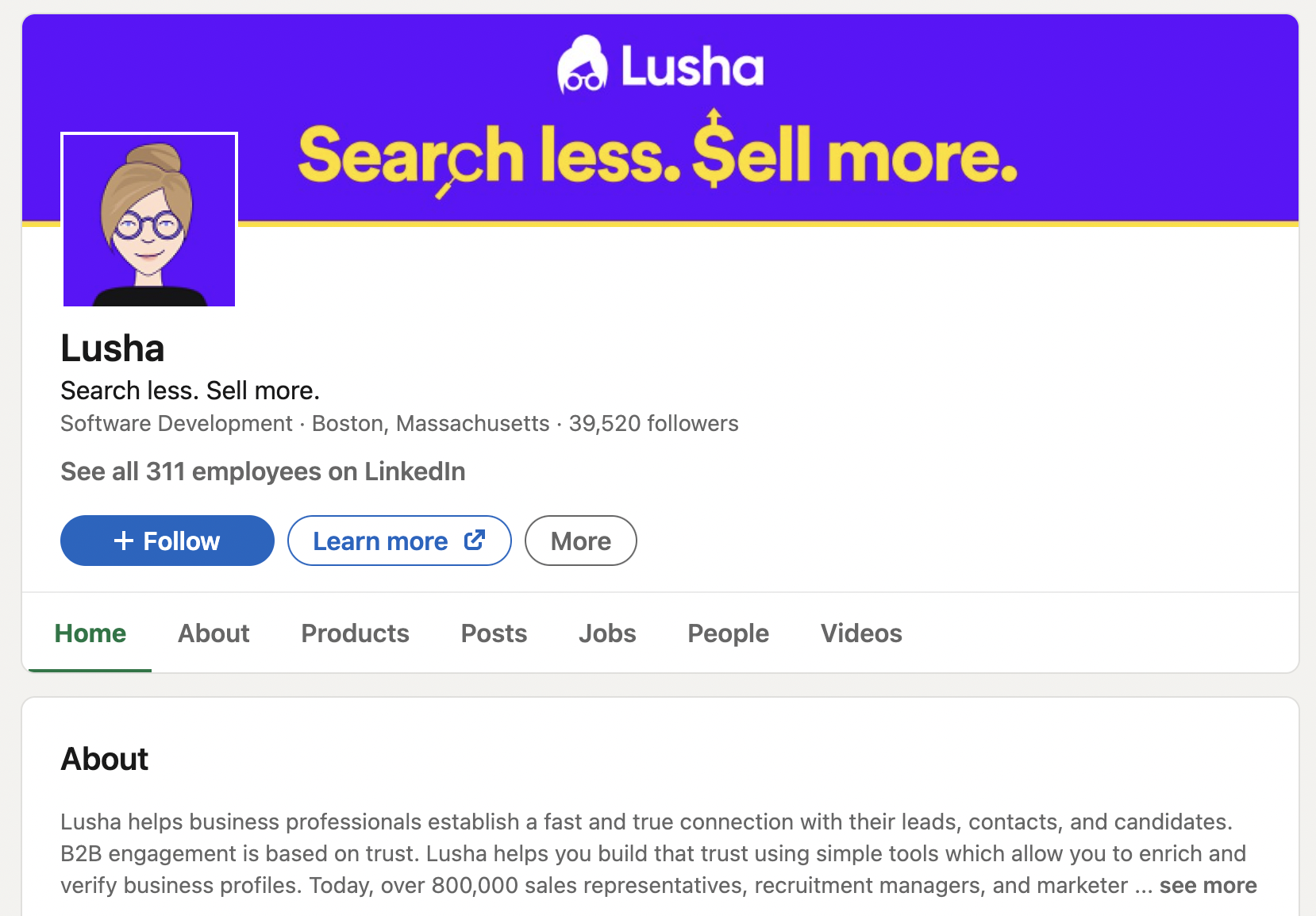
A good example of a LinkedIn Company Page
Myth: Including basic contact information is enough for a LinkedIn Company Page to be successful.
Fact: You should put more effort into making your LinkedIn Company Page readable, convincing, and appealing.
You need to set up a strategy first
As it is with Facebook, Instagram, or any other social media channel, you shouldn’t start marketing on LinkedIn without a defined strategy.
By having a strategy in place, on a day-to-day basis you’ll know:
- What you want to achieve and when.
- What kind of content should be posted and what tools you have available.
- What KPIs should be monitored along the way to see your progress.
What should your goal be?
Basically, anything that you believe is relevant and important. 😉 That could be generating leads, increasing website traffic, growing brand awareness in specific markets, increasing engagement, helping recruit new talent, etc.
When setting goals, it’s good practice to follow the SMART methodology. That will ensure your goals are:
- Specific. Everyone in your team will know precisely what the main goal is.
- Measurable. By deciding on KPIs at the very beginning, you’ll know what should be measured, when, and when you can be satisfied with your results.
- Achievable. Your goals should be realistic at any given time.
- Relevant. The goals you set should also be relevant to your main company goals (for a quarter or year).
- Time-bound. You should know what the deadline is for achieving your goals.
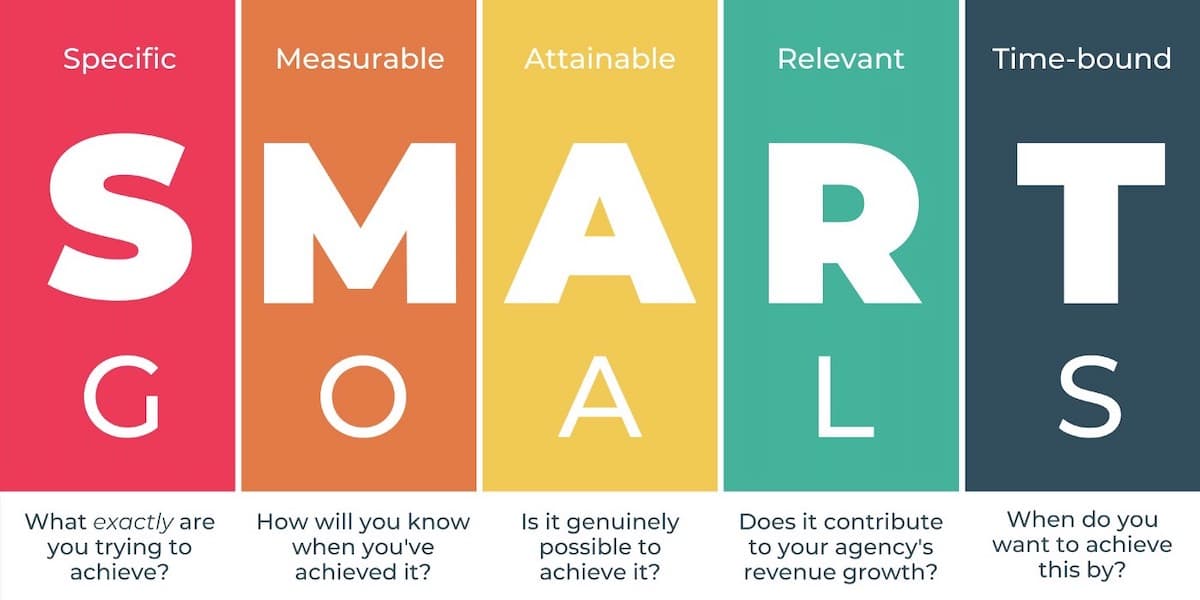
Smart goals template, source
Myth: You can start marketing activities on LinkedIn any time with a 100% guarantee of achieving success.
Fact: Without a LinkedIn strategy, it’s very unlikely that you’ll be satisfied with your overall LinkedIn performance.
Analytics is crucial (as always)
Marketing on LinkedIn wouldn’t be complete without analytics. As every aspect of your brand’s social media presence should be analyzed, LinkedIn is no exception.
From your audience demographics and content performance to reach, engagement, and impressions, there are many LinkedIn metrics that can (and should be) monitored along the way. They will help you make data-driven decisions and optimize your LinkedIn strategy.
You can use LinkedIn’s built-in analytics to monitor your page performance. However, just like other native analytics solutions (for example, Facebook Insights), LinkedIn’s analytics aren’t perfect.
Here are the biggest cons of LinkedIn’s native analytics:
- It’s impossible to analyze how the follower base has changed over time.
- Historical data isn’t always presented in a way where it can be compared easily.
- You’ll only get access to basic data (like impressions or visitors).
By using an external social media analytics tool, you can get much more out of your own data. In Sotrender, you’ll find in-depth metrics informing about your content performance, audience behaviors and preferences, reach, engagement and more. Having your data presented on interactive charts makes it so much easier to draw meaningful conclusions.
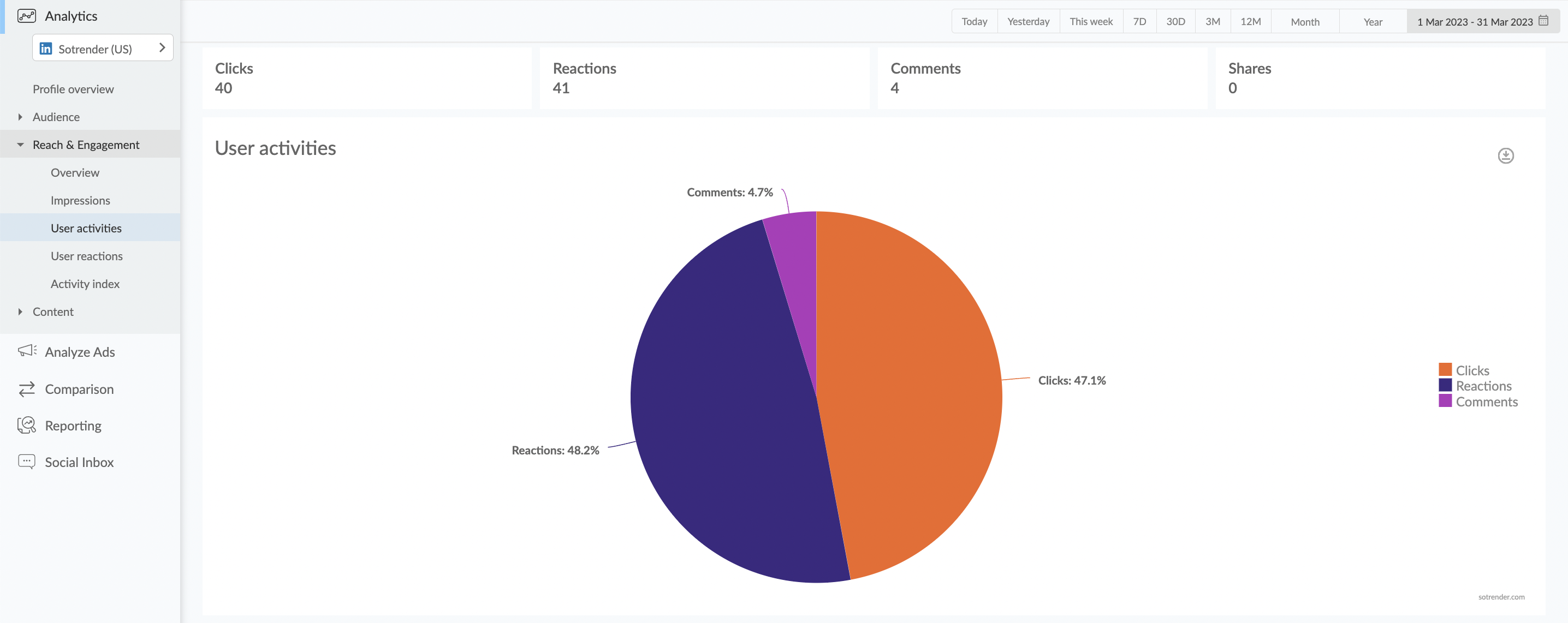
LinkedIn user activities analysis in Sotrender
Myth: LinkedIn’s analytics are useless.
Fact: LinkedIn’s built-in analytics are a great starting point for monitoring your performance. However, you can get much more out of your data if you use an external analytics app, like Sotrender.
Are LinkedIn Ads worth it?
In LinkedIn, as with every other social media channel, it’s also possible to set up ads that can help brands reach new users and achieve their goals faster.
What is usually holding marketers back from setting up LinkedIn campaigns, though, is their cost. LinkedIn ads can be quite pricey.
The average CPC (cost per click) for LinkedIn ads hovers around $5.39. Compared to Facebook’s ecosystem, it’s a lot. Additionally, the CPM (cost per impression) is around $6.37.
For reference, on Facebook the average CPC is $0.97 and the average CPM $7.19 (which is constantly increasing, by the way).
However, it has to be said that the leads you’ll collect or the traffic you’ll get from LinkedIn ads will be of much higher quality.
There are a few reasons why:
- The LinkedIn audience consists mostly of professionals.
- It’s much easier to focus on a specific industry and target your ICP precisely.
- Most likely your brand will compete with significantly less advertisers than on other platforms.
- LinkedIn is one of the most trusted social media channels.
Regarding the total budget, according to professionals like AJ Wilcox, brands should have a budget of $5K per month reserved if they want to go for LinkedIn ads (with a daily budget of around $25-$50 per campaign).
We are aware, though, that especially for smaller B2B companies, this will be a tremendous and unacceptable cost holding many companies back from this form of paid promotion.
Myth: LinkedIn ads are pricey and not worth it.
Fact: LinkedIn ads can be highly effective and impactful in terms of your business growth, especially if you follow best practices when creating them.
Marketing on LinkedIn made easy
In our LinkedIn guide, we’ve touched on a few of the most important aspects of LinkedIn marketing activities. We hope you now know whether or not LinkedIn is the right channel for your brand, what you should take care of first, and why setting a strategy and analyzing your LinkedIn performance is so crucial.
Below, you’ll also find some additional useful resources:
- If you don’t yet know how to create a LinkedIn Company Page here is a great guide from Neal Schaffer.
- Looking for some great small business LinkedIn Page examples? Here are some.
- Learn how to create winning LinkedIn outreach campaigns.
